County Gaol / HMP Aylesbury, Aylesbury, Buckinghamshire
The new Buckinghamshire County Gaol, on Bierton Hill, Aylesbury, was erected in 1845-7 to replace the >existing prison and bridewell behind the Shire Hall.
The architect of the new building was Charles James Peirce, though based on model plans devised by the government's Surveyor General of Prisons, Joshua Jebb. Like other new prisons of the period, it used a radial layout, with cell wings radiating from a central supervisory hub. There was, however, some disagreement between Jebb and the local gaol-building committee as to whether the new building should be completely oriented to the 'separate' system of operation, favoured by Jebb, with no communal areas, or, as local opinion preferred, the inclusion of communal dayrooms. As a compromise, the final plan included airing yards on both the separate and associated systems.
The new gaol provided cells for 250 prisoners. Its chapel had 274 seats, arranged so that prisoners could see the chaplain but not each other. The establishment was primarily a male local prison, but included separate wings for females and for debtors.
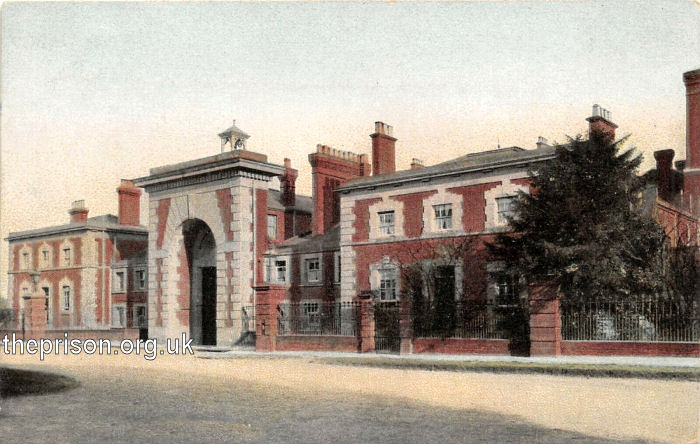
Aylesbury Prison, Aylesbury, early 1900s.
First introduced in 1879, the 'Star Class' (identified by a star on their prison uniform) were first offenders, who were separated from other inmates so as not to be 'contaminated' by contact with them.
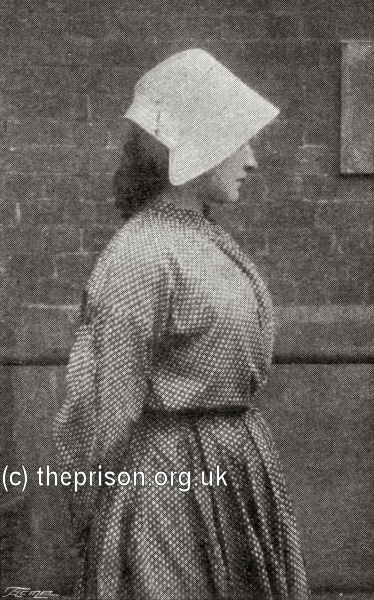
Star Class prisoner at Aylesbury Convict Prison, Aylesbury, Buckinghamshire, c.1900. © Peter Higginbotham
In 1890, Aylesbury was redesignated as a Convict Prison for females, receiving the more serious offenders sentenced to 'penal servitude', who previously would have been transported overseas. The conversion work, between 1890 and the re-opening of the prison in 1895, was carried out by male convicts.
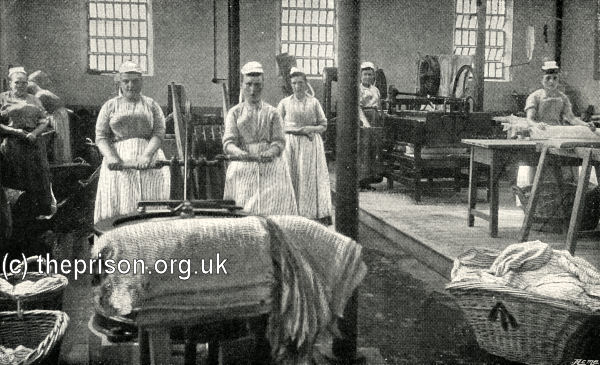
Laundry at Aylesbury Convict Prison, Aylesbury, Buckinghamshire, c.1900. © Peter Higginbotham
In 1902, two additional wings were constructed, in which a State Inebriate Reformatory was established, to house female 'habitual drunkards' whose offences were punishable with imprisonment or penal servitude and had been committed under the influence of drink or in which drunkenness was a contributing cause.
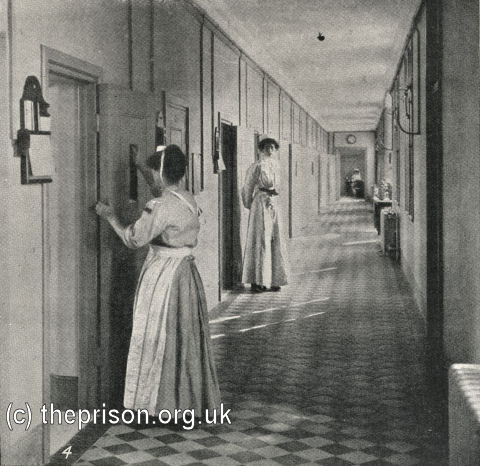
Corridor of cells at the Female Inebriate Reformatory, Aylesbury, c.1908. © Peter Higginbotham
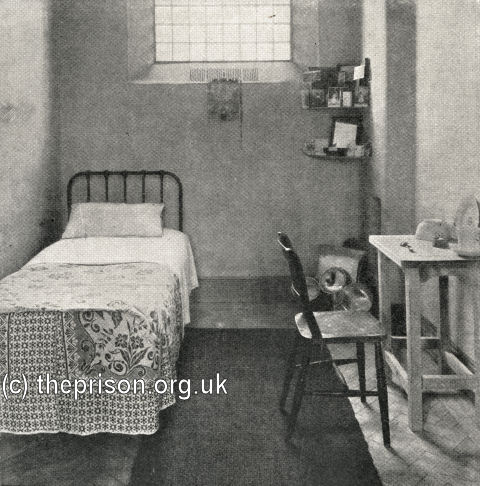
Cell interior at the Female Inebriate Reformatory, Aylesbury, c.1908. © Peter Higginbotham
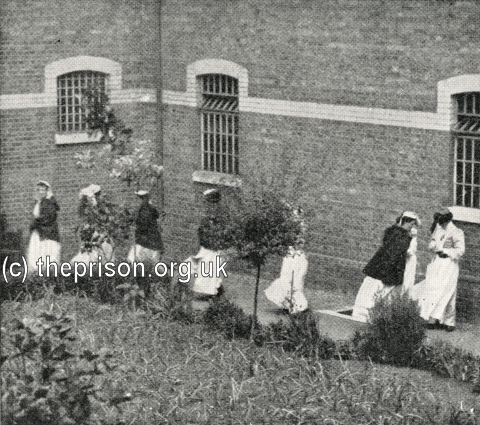
Inmates taking exercise at the Female Inebriate Reformatory, Aylesbury, c.1908. © Peter Higginbotham
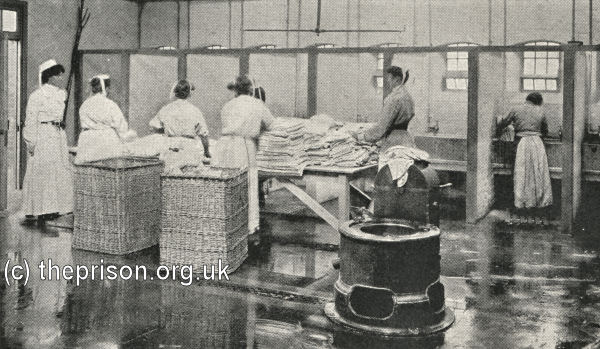
Inmates at work in wash-house at the Female Inebriate Reformatory, Aylesbury, c.1908. © Peter Higginbotham
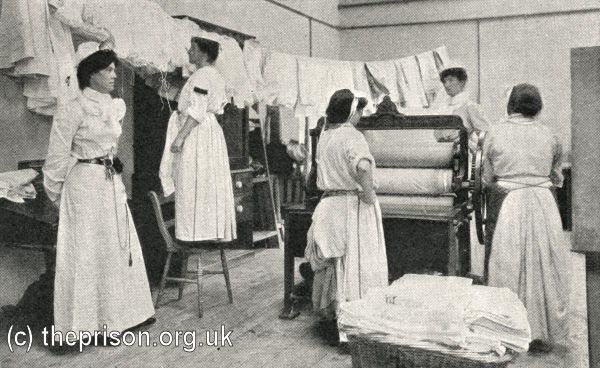
Inmates at work in laundry at the Female Inebriate Reformatory, Aylesbury, c.1908. © Peter Higginbotham
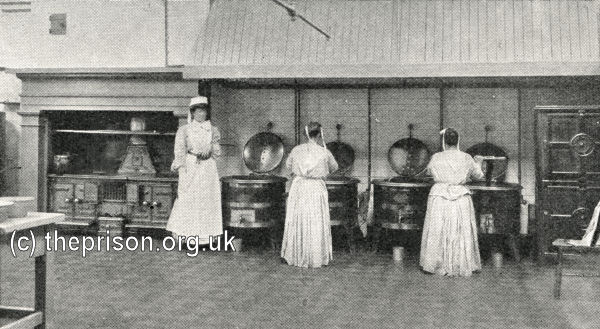
Inmates at work in kitchen at the Female Inebriate Reformatory, Aylesbury, c.1908. © Peter Higginbotham
From 1909, one wing of the prison housed the new Aylesbury Borstal Institution, accommodating female offenders aged from 16 to 21 years.
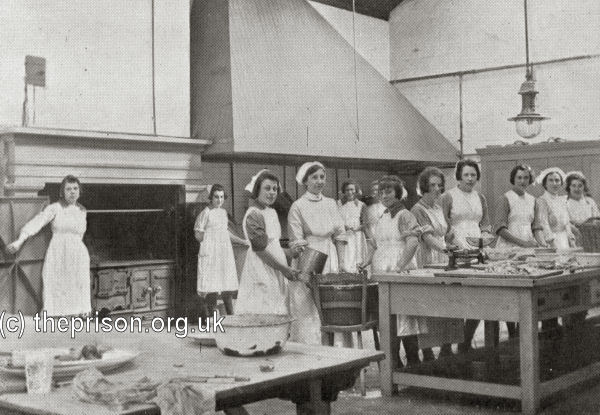
Inmates doing kitchen work at the Female Borstal, Aylesbury, c.1926. © Peter Higginbotham
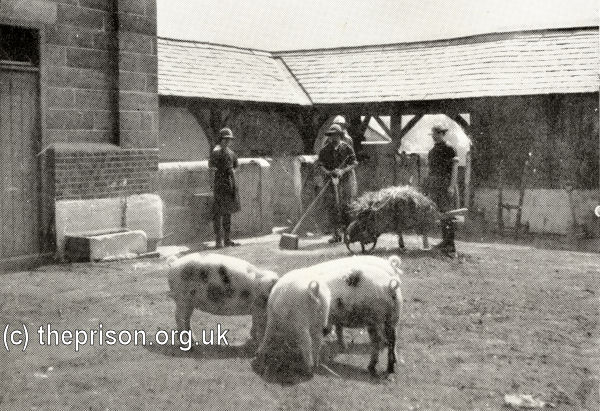
Inmates doing farm work in kitchen at the Female Borstal, Aylesbury, c.1926. © Peter Higginbotham
In 1912, the prison was used to housed a number of suffragette prisoners arrested during mass demonstrations by the Women's Social and Political Union, a militant suffrage organisation whose members used direct action in support of their campaign for the vote. In March 1912, suffragettes carried out a mass window-smashing raid in London. When Holloway Gaol, the usual prison for suffragettes, was unable to cope with the numbers arrested, many were sent to Aylesbury. On 5 April, the prisoners began a secret hunger strike which went undetected for several days, and when the authorities found out, hunger strikers were fed by force, although four were released on health grounds. The Aylesbury hunger strike spread to other prisons to become the largest mass hunger strike undertaken by suffragettes, with over eighty prisoners taking part. Aylesbury became the focus for protests against forcible feeding and on 13 April 1912 over 100 protesters marched on the gaol to hold a meeting at the gates. Following the outbreak of the First World War, all suffragette prisoners were released, having been granted an amnesty by the government.
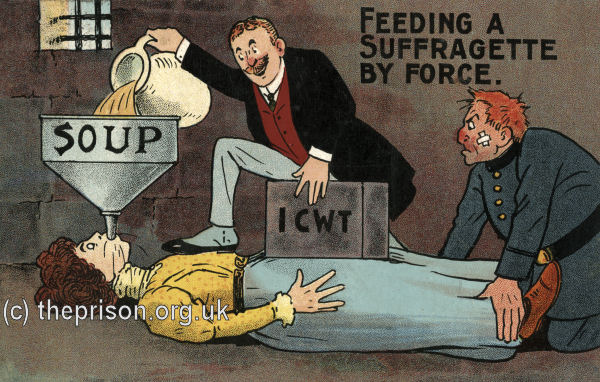
A suffragette being force-fed, 1912. © Peter Higginbotham
In 1959, Aylesbury became an adult male prison. Since 1989, it has housed young male offenders.
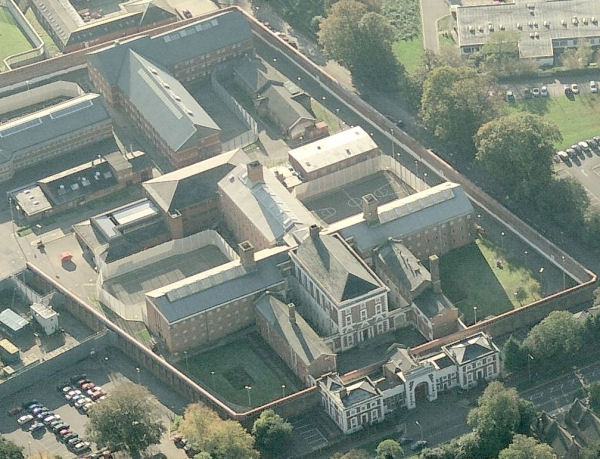
Aylesbury Prison, aerial view, © Microsoft
Records
Note: many repositories impose a closure period of up to 100 years for records identifying individuals. Before travelling a long distance, always check that the records you want to consult will be available.
- Centre for Buckinghamshire Studies, County Hall, Walton Street, Aylesbury, Bucks HP20 1UU. Holdings include: Register of deaths (1863-1913); Register of descriptions of inmates (1891-1909); Warrants and returns etc. (1861-1912); Governor's journal (1897-1903).
- The National Archives, Kew, Richmond, Surrey, TW9 4DU. Has a wide variety of crime and prison records going back to the 1770s, including calendars of prisoners, prison registers and criminal registers.
- Find My Past has digitized many of the National Archives' prison records, including prisoner-of-war records, plus a variety of local records including Manchester, York and Plymouth. More information.
- Prison-related records on
Ancestry UK
include Prison Commission Records, 1770-1951
, and local records from London, Swansea, Gloucesterhire and West Yorkshire. More information.
- The Genealogist also has a number of National Archives' prison records. More information.
Census
Bibliography
- Higginbotham, Peter The Prison Cookbook: A History of the English Prison and its Food (2010, The History Press)
- Brodie, A. Behind Bars - The Hidden Architecture of England's Prisons (2000, English Heritage)
- Brodie, A., Croom, J. & Davies, J.O. English Prisons: An Architectural History (2002, English Heritage)
- Harding, C., Hines, B., Ireland, R., Rawlings, P. Imprisonment in England and Wales (1985, Croom Helm)
- McConville, Sean A History of English Prison Administration: Volume I 1750-1877 (1981, Routledge & Kegan Paul)
- Morris, N. and Rothman, D.G. (eds.) The Oxfod History of the Prison (1997, OUP)
- Pugh R.B. Imprisonment in Medieval England (1968, CUP)
Links
- Prison Oracle - resources those involved in present-day UK prisons.
- GOV.UK - UK Government's information on sentencing, probation and support for families.
Except where indicated, this page () © Peter Higginbotham. Contents may not be reproduced without permission.



